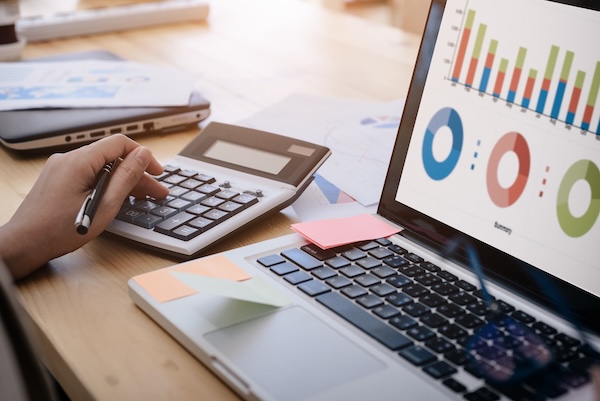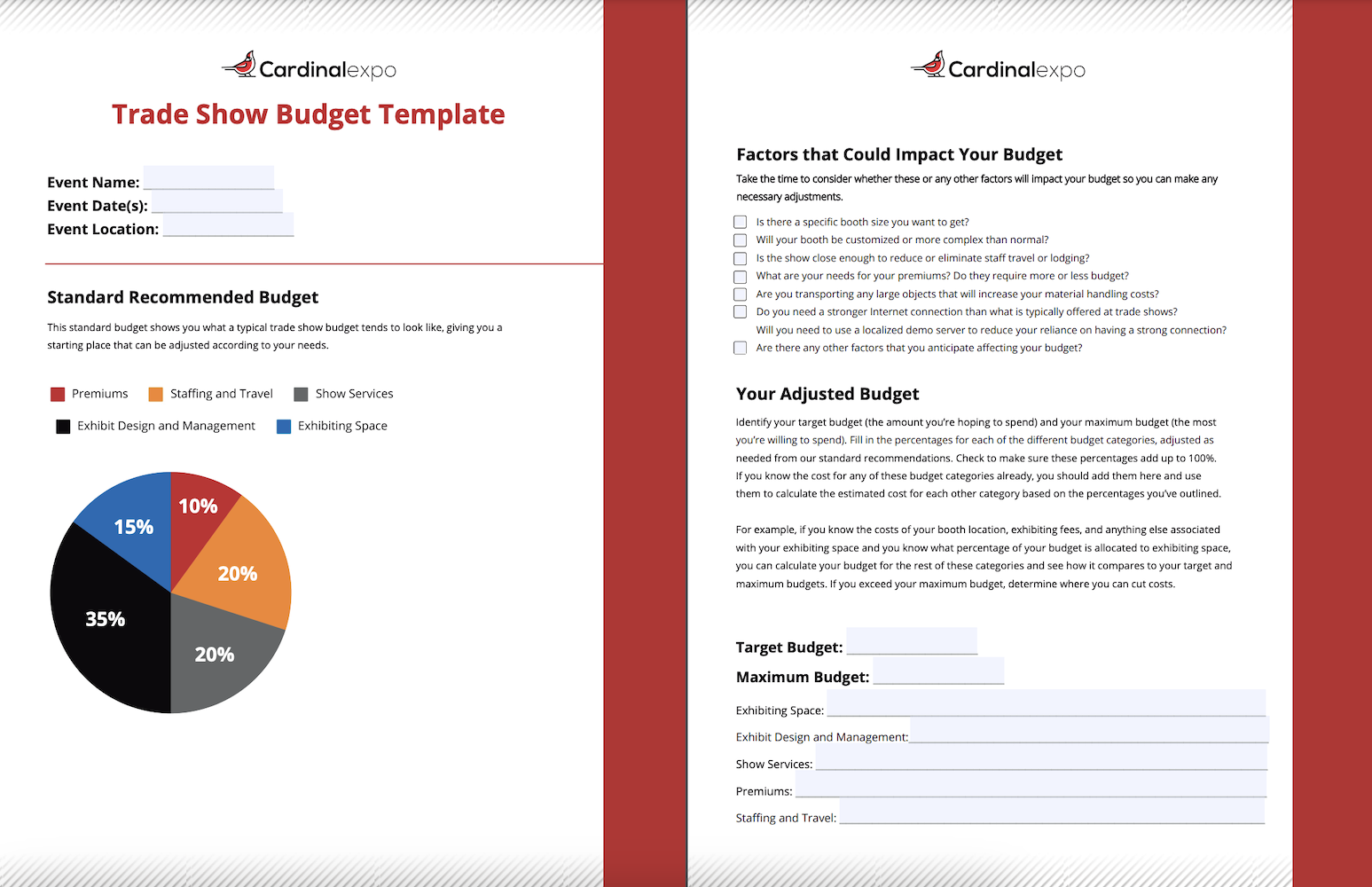If you’re looking to get the best value from exhibiting, you need to prepare in advance. A major component of early planning is developing a budget. By identifying how much your company is willing to spend on the expo, you can better understand how much you should spend on your exhibiting space, exhibit design and management, show services, premiums, and staffing and travel. We’re here to share a trade show budget template that will get you started, along with advice based on our years of experience in the trade show industry.
Table of Contents:
- Setting a Target and Maximum Budget
- Free Trade Show Budget Template
- Breaking Down Your Trade Show Budget
- 4 Additional Factors Impacting Budget
- Make the Most of Your Budget with Cardinal
Setting a Target and a Maximum Budget
Budgeting is a vital skill in all financial planning, and there are advantages to setting both a target budget and a maximum budget. While a target budget can help with setting a goal for how much you’d like to spend and save, it leaves more flexibility for unexpected expenses. For example, if transportation fees cost more than anticipated, the target budget may not be met, but it most likely won’t hinder your brand’s trade show success.
Creating a maximum budget firmly defines how much your company is willing to spend on exhibiting, and it leaves no room for compromises. The maximum budget is naturally set higher than the target budget, and it reinforces that while some fees may be higher than expected, only so much leeway can be provided. After all, going to a trade show is a significant financial investment; you want to guarantee that it’s a profitable venture.
Here are some tips for calculating your budget in advance:
- Determine non-negotiable expenses. These consist of fixed costs that cannot be reduced any further, and thus will have to be paid regardless.
- Calculate your ROI and consider how funds can best be allocated to increase financial returns and grow the company.
- Use a budgeting tool, such as our trade show budget template or a spreadsheet, to track payments and future expenses against your budget.
Free Trade Show Budget Template
Trade show planning can be a daunting task. You can count on Cardinal to minimize exhibit-related stressors and use our free trade show budget template for outlining your target budget, maximum budget, and budget subcategories. Click here to download it.
Breaking Down Your Trade Show Budget
There are several ways to break down budgeting to make it more manageable. Consider these expense subcategories as you begin defining your budget and working through the template provided above.
Exhibiting Space
Exhibiting space describes the floor space that you are renting out during the show. Bigger and more desirable locations tend to be more expensive, while smaller and less desirable locations tend to be less. This part of your budget also includes exhibiting fees that you must pay in order to participate. We generally recommended allotting about 15% of your trade show budget to these expenses.
If you are looking for ways to reduce the cost of exhibiting space, research whether the association hosting the expo is looking to recruit more members. Although there are typically annual fees related with association membership, members are often privy to exhibiting discounts, such as a reduced price on exhibit space per square foot. Not only that, but members may also have additional marketing opportunities associated with the trade show that are worth the price of membership.
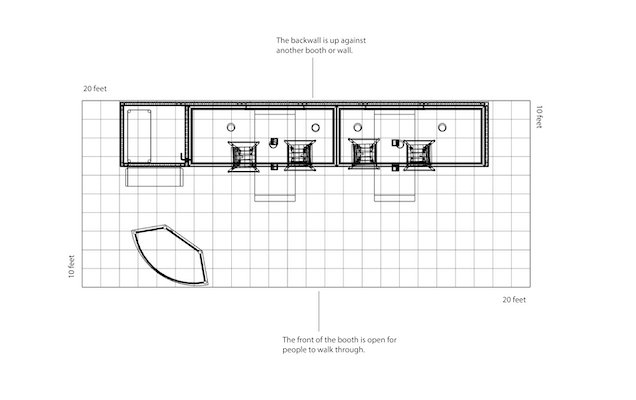
Another factor to keep in mind is your booth size. If you want to maximize your visibility, sometimes it will make the most financial and strategic sense to get one big booth, and other times it will work best to get two smaller booths in different parts of the exhibit hall. Perhaps one show is worth investing in a larger booth but your budget demands a smaller booth for the rest of your trade show program. Renting an exhibit rather than buying one will afford you the flexibility to scale up and down as needed.
As you invest in exhibiting space and determine which shows to participate in, also pay close attention to the fine print. What will happen to your deposit if you can no longer attend the event? When are payments due? Is there a way to upgrade to a better exhibit space if one becomes available? All these questions are worth asking before making a payment.
Exhibit Design and Management
Exhibit design and management is an all-encompassing term for many different trade show booth services, and it takes place before, during, and after the event. While some companies handle only booth design, Cardinal Expo helps you make the most of your time and money by managing your exhibit at every step in the process. Our industry experience allows us to operate more efficiently, passing along the savings to you.
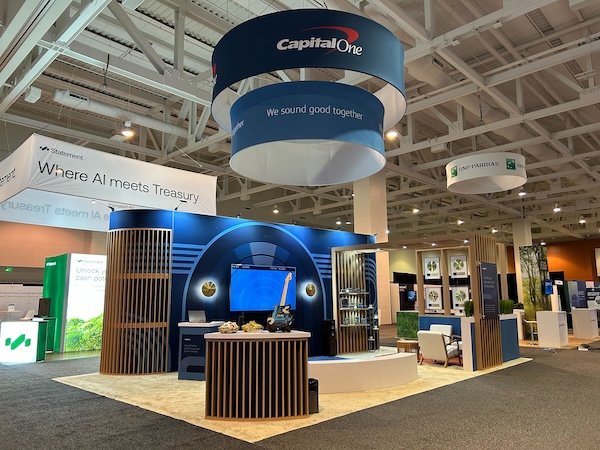
Here are some ways our exhibit design and management can aid you:
- Before the trade show:
- Ideating the booth, designing it, and coordinating with you throughout for feedback
- Building and furnishing your booth
- Creating original artwork and graphics for the exhibit
- Handling conference calls and correspondence with onsite service providers
- Overseeing paperwork, documentation, and insurance
- Shipping the booth to the show
- During the trade show:
- Assembling the booth
- Onsite management, including paperwork assistance and coordinating onsite services like electricity
- After the trade show:
- Dismantling the booth
- Shipping the booth back
- Warehousing the booth between shows, if needed
- Managing billing across all vendors so you receive just one bill from us
Given how crucial exhibit design and management is to your success, we recommend saving 35% of your budget for these services.
Show Services
Show services describe third-party services that your company invests in onsite at the trade show. These can include:
- Electrical services
- Internet
- Rigging
- Material handling
- Lead retrieval
- Drayage/shipping
- Food and beverages
These services are vital for ensuring everything arrives safely on location and works effectively once it’s there. Services like the Internet are especially important if you’re infusing your exhibit with technological displays like touchscreens. Generally, allotting 20% of the budget towards show services should cover necessary expenses.
At Cardinal Expo, we also help coordinate with these third-party show services (excluding food and beverage) as part of our management services.
Premiums
Premiums encompass demo products, printed literature, product samples, and giveaway items. Giveaways can drive traffic to your booth and ensure that your brand remains memorable, while product samples and demos facilitate hands-on engagement with potential customers. Printed literature is also a great way to educate visitors, especially if booth staff are busy.
When it comes to budgeting, premiums are one of the hardest expenses to predict because they can vary greatly in cost. The price of manufacturing product samples and demo products is highly dependent on what kind of product your company is selling and the quantity needed for the event. Similarly, the quality and quantity of giveaways can vary significantly.
While premiums can be allotted a small portion of your budget, the price can also spiral out of control quickly. In general, we recommend limiting premiums to 10% of the total budget and expanding as needed from there, which would necessitate cutting costs in other areas.
Staffing and Travel
The last main expense subcategory is staffing and travel. It’s imperative to account for paying your trade show booth staff, as well as covering their transportation and lodging expenses, meals, and any per diems.
This will likely constitute 20% of your budget. However, if you exhibit at a show nearby, you may be able to reduce or even eliminate staff transportation and lodging costs, freeing up budget for other areas.
4 Additional Factors Impacting Budget
Not all trade shows are made equal; as noted in our trade show budget template, there are many factors that could change the way you budget. Here are a few of the most common:
- Level of Booth Customization: The larger, more complex, and more customized your booth is, the more it is likely to cost.
- Distance to the Expo: If an exhibition is close enough to your company, you may be able to budget less for your team’s transportation and lodging. By saving money on travel expenses, you can budget more for exhibit design or premiums.
- Material Handling: The larger your demo products are, the more expensive material handling will be. This is one of the many reasons that premiums differ in cost so drastically.
- Internet at the Exhibition: Installing innovative tech in your exhibit can make a major visual impact and drive attention to your booth. However, internet connectivity can be expensive (a low estimate for basic internet connection at a convention center is $4,500 for 3.5 megabits per second). Consider a more localized solution like a demo server so your connectivity costs less.
Make the Most of Your Budget with Cardinal
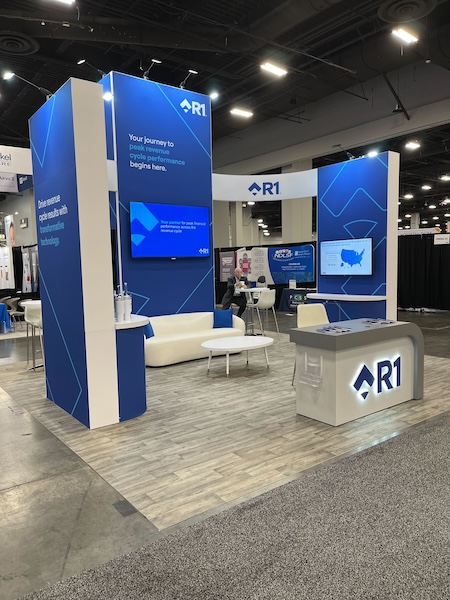
As an end-to-end exhibit management service, we pride ourselves on offering high-quality, efficient trade show services for a reasonable price. Reduce the stress of preparing for your next trade show by leaving these responsibilities to us:
- Exhibit Design and Management: Cardinal Expo not only designs your booth, we also manage it at every step of the process, including fabrication, shipping, installation, deconstruction, and warehousing.
- Graphics and Artwork: Looking to step up your branding? We design and supply custom graphics and artwork to bring your booth to life.
- Bill Management Services: We will take care of paying vendor bills, leaving you with just a single bill from us to keep track of.
- Third-Party Show Service Management: Instead of connecting with third-party service providers yourself, Cardinal will make the service arrangements for you.
-
If you’re ready to start a conversation, please contact us today by calling (800) 695-3452 or filling out the form below. We look forward to working with you!
Contact Us Today
We at Cardinal Expo are here to answer any questions you may have, provide you with additional information, and create an effective solution for your exhibit needs.
"*" indicates required fields

